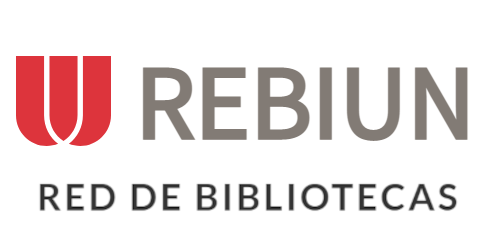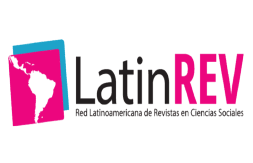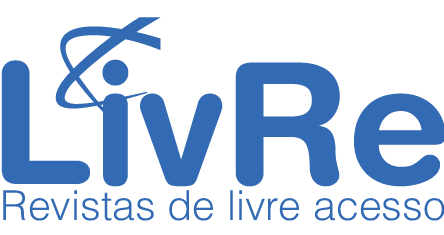Metodología 5S con enfoque en seguridad laboral en entornos industriales. Una revisión sistemática de la literatura
DOI:
https://doi.org/10.69639/arandu.v11i2.339Palabras clave:
metodología 5s, seguridad industrial, riesgos laborales, prevención de accidentes, entornos industrialesResumen
La metodología 5S, aplicada con un enfoque en seguridad laboral en entornos industriales, ha demostrado su efectividad para mejorar la organización y prevenir riesgos. Este estudio tuvo como objetivo analizar la relación entre la metodología 5S y la seguridad industrial mediante una revisión sistemática de la literatura (RSL). Las preguntas clave que guiaron la investigación fueron: ¿Cuál fue la relación entre los estudios científicos y las palabras clave revisadas en torno a la metodología 5S con un enfoque en seguridad industrial? y ¿Cuáles fueron los países que realizaron mayores contribuciones científicas en este ámbito durante los últimos cinco años? Para abordar estas preguntas, se analizaron 53 artículos indexados en Scopus y Dimensions, y se emplearon herramientas de visualización de redes como VOSviewer para mapear las palabras clave y determinar los principales países contribuyentes. Los resultados mostraron que la metodología 5S se aplicó con enfoques de investigación variados, predominando el enfoque mixto y cuantitativo, con una notable versatilidad en su valoración con Múltiples técnicas de investigación. Asimismo, se identificaron las principales soluciones y metodologías empleadas, lo que contribuyó al diseño de un protocolo que facilitará futuras investigaciones en esta relación.
Descargas
Citas
Costa, A., Ferreira, L., Silva, F., & Sá, J. (2021). Analysis and improvement in the Electrical Discharge Machining process used on the manufacturing of moulds for plastics injection moulding Analysis and improvement in the Electrical Discharge Machining process used on the manufacturing of moulds for plast. IOP Conference Series: Materials Science and Engineering PAPER, 1193, e 012021. https://doi.org/10.1088/1757-899X/1193/1/012021
Anugerah, A. R., Muttaqin, P. S., & Trinarningsih, W. (2022). Social network analysis in business and management research: A bibliometric analysis of the research trend and performance from 2001 to 2020. In Heliyon (Vol. 8, Issue 4). Elsevier Ltd. https://doi.org/10.1016/j.heliyon.2022.e09270
Cabrera, J. L., Corpus, O. A., Maradiegue, F., & Álvarez Merino, J. C. (2020). Improving quality by implementing lean manufacturing, spc, and haccp in the food industry: A case study. South African Journal of Industrial Engineering, 31(4), 194–207. https://doi.org/10.7166/31-4-2363
Cabrera, O., Tejeda, J., Llontop, J., Mendoza, P., Alvarez, J. C., Demirkesen, S., Cabrera, O., Tejeda, J., Llontop, J., Mendoza, P., & José, C. (2023). A validation model to reduce non-contributory time based on Lean tools: Case of a construction company in Perú A validation model to reduce non-contributory time based on Lean tools: Case of a construction company in Perú. Cogent Engineering, 10(1). https://doi.org/10.1080/23311916.2023.2236838
Dube, L., & Gupta, K. (2023). Lean Manufacturing Based Space Utilization and Motion Waste Reduction for Efficiency Enhancement in a Machining Shop: a Case Study. Applied Engineering Letters, 8(3), 121–130. https://doi.org/10.18485/aeletters.2023.8.3.4
Fernández, J. P. R., Godina, R., Pimentel, C. M. O., & Matias, J. C. O. (2019). The impact of 5s + 1s methodology on occupational health and safety. In Lean Manufacturing: Implementation, Opportunities and Challenges.
Franchina, L., Calabrese, A., Inzerilli, G., Scatto, E., Brutti, G., & de los Ángeles Bonanni, M. V. (2021). Thinking green: The role of smart technologies in transforming cities’ waste and supply Chain’s flow. Cleaner Engineering and Technology, 2, 100077. https://doi.org/10.1016/J.CLET.2021.100077
Hou, L., Wu, S., Zhang, G. K., & Tan, Y. (2021). applied sciences Literature Review of Digital Twins Applications in Construction Workforce Safety.
Kalubovila, K. A. O. T., & Kawmudi, W. N. (2023). The Impact of Lean Construction Tools on the Reduction of Contractor-Related Causes of Delay in Sri Lankan Construction Industry. KDU Journal of Multidisciplinary Studies, 5(2), 84–92.
https://doi.org/10.4038/kjms.v5i2.79
Malacina, I., & Teplov, R. (2022). Supply chain innovation research: A bibliometric network analysis and literature review. International Journal of Production Economics, 251, 108540. https://doi.org/10.1016/J.IJPE.2022.108540
Manzanares-Cañizares, C., Sánchez-Lite, A., Rosales-Prieto, V. F., Fuentes-Bargues, J. L., & González-Gaya, C. (2022). A 5S Lean Strategy for a Sustainable Welding Process. Sustainability, 14(11). https://doi.org/10.3390/su14116499
Mena Mejía, S. A., Muyulema Allaica, J. C., Bermeo García, M. V., & Reyes Soriano, F. E. (2022). La norma ISO 45001:2018 y la reducción de accidentabilidad en empresas resilientes. Una revisión sistemática. AlfaPublicaciones, 4(3.1), 187–213. https://doi.org/10.33262/ap.v4i3.1.247
Monnanyana, O., & Gupta, K. (2021). A Case Study on Implementation of 5S in a Manufacturing Plant to Improve Operational Effectiveness. MATEC Web of Conferences, 346, 03109. https://doi.org/10.1051/matecconf/202134603109
Monteiro, J., & Barata, J. (2021). Artificial Intelligence in Extended Agri-Food Supply Chain: A Short Review Based on Bibliometric Analysis. Procedia Computer Science, 192, 3020–3029. https://doi.org/10.1016/J.PROCS.2021.09.074
Mrabti, A., Bouajaja, S., Khlif Hachicha, H., & Nouri, K. (2023). Digital 5S: a case study of an Automotive wiring industry. ITM Web of Conferences, 52, 01005. https://doi.org/10.1051/itmconf/20235201005
Muotka, S., Togiani, A., & Varis, J. (2023). A Design Thinking Approach: Applying 5S Methodology Effectively in an Industrial Work Environment. Procedia CIRP, 119, 363–370. https://doi.org/10.1016/j.procir.2023.03.103
Publicado
Cómo citar
Número
Sección
Licencia
Derechos de autor 2024 Jorge Iván Perero De La Cruz, Juan Carlos Muyulema Allaica

Esta obra está bajo una licencia internacional Creative Commons Atribución 4.0.





















